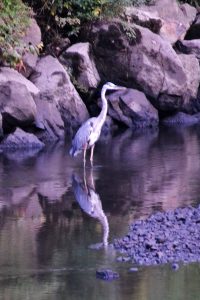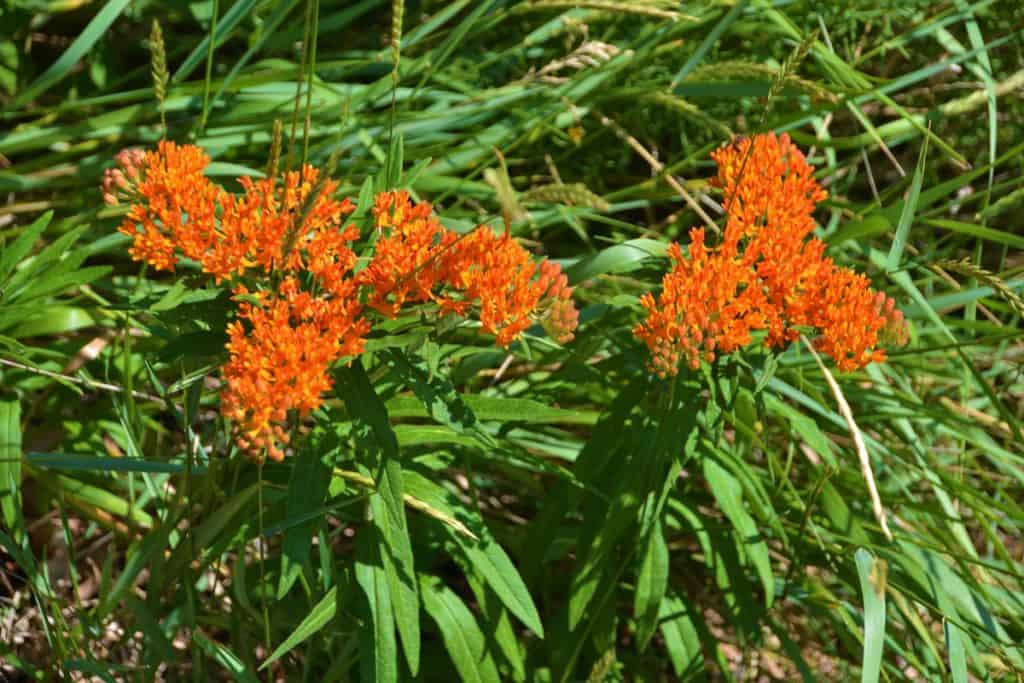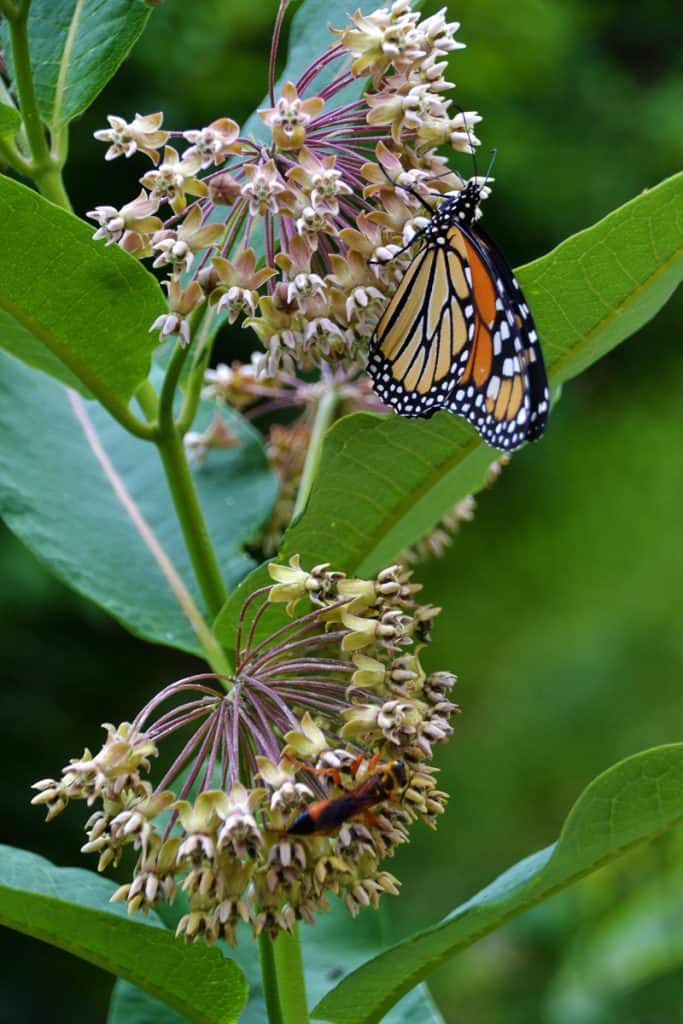Here’s what’s blooming in town this week to make your walks more enjoyable
On July 21, the International Union for the Conservation of Nature added monarch butterflies to their endangered species list. Monarchs are unique among butterflies in that they travel the longest distance during migration, from their winter homes in Mexico to summer locations along the eastern and western coasts of North America. Some other butterfly species also migrate, but none travel such a long distance. Monarch numbers had been in decline for a few decades, although there has been some evidence of a recent slight increase in the East Coast population compared to a year or so ago. Exact reasons for the decline are not known with certainty, but habitat loss and, in particular, reduction in wild milkweed plants may play a part.
Monarch butterflies need milkweed plants to reproduce. Their larvae cannot thrive on anything other than a few species of milkweed (Asclepias spp.) so it is important to encourage wild milkweeds or plant them in the garden. Adult monarchs deposit eggs on the undersides of milkweed foliage. When the eggs hatch, the larvae begin eating the leaves. While a generation ago most people considered common milkweed (Asclepias syriaca) not a garden-worthy plant, most people now see it as a very valuable asset if they would like to continue to see monarch butterflies in the world. This plant has been actively encouraged for several years at the Saugus Iron Works site, and quite a bit of common milkweed grows on the slopes leading down to the river.
Another native milkweed species, known as butterfly weed or pleurisy root (Asclepias tuberosa), has been valued in the garden somewhat longer. It usually has bright orange flowers although there are also yellow varieties available. It has narrow dark green leaves. This also grows in several places in the Saugus Iron Works, including the small garden near the library building and on the slope leading down toward the river. In general, butterfly experts recommend planting native milkweed species rather than tropical ones, which can disrupt migration patterns.
Other steps people can take to help monarchs would be to avoid use of pesticides that harm insects, and to eradicate black swallowwort (Vincetoxicum nigrum) plants on their property. Black swallowwort is an invasive European perennial vine that deceives butterflies into laying eggs on it – but when the larvae hatch and begin eating the leaves they will be poisoned. The swallowwort also entwines adjacent plants and can pull them down, endangering native plants in the wild and harming garden plants when it spreads in a garden.
Adult monarchs also need a good supply of nectar, and many flowering plants can provide this. They are very attracted to the aptly named butterfly bush (Buddleia davidii), which is fragrant and blooms most of the summer. It is not a native plant and in slightly warmer areas than ours the butterfly bush reseeds a bit too prolifically, but it is in this plant that I most often see monarchs and many other pollinators in my own and other people’s gardens. Even the hummingbird seems to make a beeline for this plant in the early mornings! My three-year-old butterfly bush is now over 6′ tall. It is one of the most drought tolerant plants in my sunny garden this summer. It frequently needs to have its faded flowers removed to encourage new ones to develop.
Also blooming now is a plant I remember from my mother’s and grandmother’s gardens, summer phlox (Phlox paniculata). In Julia Aston’s flower-filled garden near Saugus Center, phlox and butterfly bush grow side by side, and the butterflies flit from one to the other. Summer phlox likes sunny locations and some varieties grow 4-5′ tall once established. Flower colors are pinks, purples and white. Some varieties are hybrids with Carolina phlox (Phlox carolina), which is very similar in appearance. Pollinators are fond of this plant because of its abundant nectar. As a child I learned to pluck a flower and suck some nectar out of the narrow tube at the back. It’s not a very big snack, but it is a reminder of what the bees and butterflies are seeking when they hover around the blossoms!
Editor’s Note: Laura Eisener is a landscape design consultant who helps homeowners with landscape design, plant selection and placement of trees and shrubs, as well as perennials. She is a member of the Saugus Garden Club and offered to write a series of articles about “what’s blooming in town” shortly after the outbreak of the COVID-19 pandemic. She was inspired after seeing so many people taking up walking.





